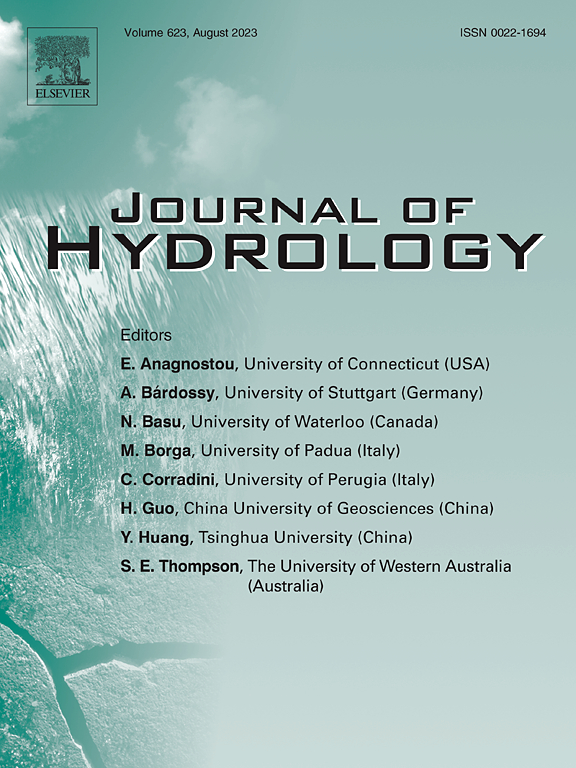Hydrological imbalance in Nam Co Lake, the third-largest lake on the Tibetan Plateau
IF 5.9
1区 地球科学
Q1 ENGINEERING, CIVIL
引用次数: 0
Abstract
Lakes on the Tibetan Plateau (TP), as key components of the Asian Water Tower, play a vital role in regional water resources and hydrologic cycle. Groundwater is an important but often ignored factor in the lake’s hydrologic cycle, largely due to challenges in quantifying its contribution. In the case of the Nam Co Lake, the third-largest lake on the TP, research on basin groundwater remains notably limited. This paper presents, for the first time, an analysis of groundwater in the water balance of Nam Co Lake, based on a comprehensive hydrogeological investigation. Results revealed lacustrine groundwater discharge into the lake was about 10.31 ± 0.31 × 10青藏高原第三大湖纳木错湖的水文失衡
青藏高原湖泊作为亚洲水塔的重要组成部分,在区域水资源和水文循环中起着至关重要的作用。地下水是湖泊水文循环中一个重要但经常被忽视的因素,主要原因是在量化其贡献方面存在挑战。就青藏高原第三大湖泊纳木错湖而言,对流域地下水的研究仍然非常有限。本文在综合水文地质调查的基础上,首次对纳木错湖水量平衡中的地下水进行了分析。结果显示,2018年5 - 10月湖泊地下水入湖量约为10.31 ± 0.31 × 108 m3。湖平面日变化表明,同期湖平面上升导致库容增加13.06 ± 1.53 × 108 m3。观察期间的水文气象观测显示,沉淀出湖面,自动气象站记录,总计7.51 ±0.75 × 108 m3,虽然湖,蒸发的测量由涡度相关系统,达到9.56 ±0.12 × 108 m3。周边河流入湖径流量为22.83 ± 2.28 × 108 m3。因此,湖泊水量平衡分析显示,在水量平衡期间,与产出相比,盈余输入为18.03 ± 2.42 × 108 m3。水失衡的唯一合理解释是渗漏,最有可能发生在该地区已知的地下断层系统。这些发现强调了地下水的重要作用,突出了湖泊渗流的规模,为纳木错湖和更广泛的TP地区的水文循环提供了新的见解。
本文章由计算机程序翻译,如有差异,请以英文原文为准。
求助全文
约1分钟内获得全文
求助全文
来源期刊

Journal of Hydrology
地学-地球科学综合
CiteScore
11.00
自引率
12.50%
发文量
1309
审稿时长
7.5 months
期刊介绍:
The Journal of Hydrology publishes original research papers and comprehensive reviews in all the subfields of the hydrological sciences including water based management and policy issues that impact on economics and society. These comprise, but are not limited to the physical, chemical, biogeochemical, stochastic and systems aspects of surface and groundwater hydrology, hydrometeorology and hydrogeology. Relevant topics incorporating the insights and methodologies of disciplines such as climatology, water resource systems, hydraulics, agrohydrology, geomorphology, soil science, instrumentation and remote sensing, civil and environmental engineering are included. Social science perspectives on hydrological problems such as resource and ecological economics, environmental sociology, psychology and behavioural science, management and policy analysis are also invited. Multi-and interdisciplinary analyses of hydrological problems are within scope. The science published in the Journal of Hydrology is relevant to catchment scales rather than exclusively to a local scale or site.
 求助内容:
求助内容: 应助结果提醒方式:
应助结果提醒方式:


